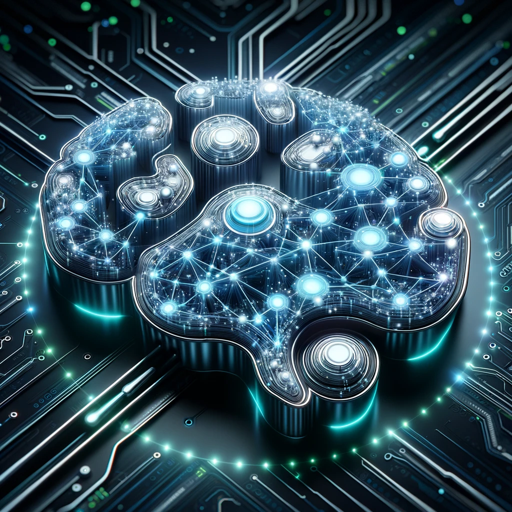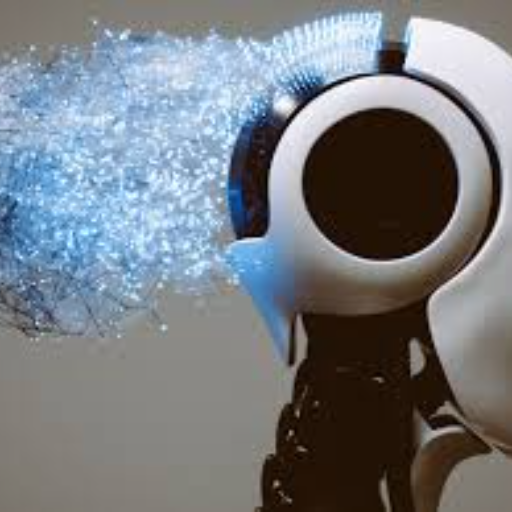Machine Learning-AI-powered machine learning tool
AI-powered insights for smarter decisions
📊 How to use pandas to analyze data?
🧠 Explain me how neural networks work
✅ Troubleshoot this issue in my code
💡 Teach me something new about ML
Related Tools
Load More
Machine Learning
A machine learning, deep learning, and data science assistant for learning, practicing, and developing algorithms.

Machine Learning Expert
Expert in machine learning & artificial intelligence theory and exercises, explaining concepts with clarity and insight. Use any of these hotkeys to get a custom answer.

Deep Learning Master
Guiding you through the depths of deep learning with accuracy and respect.

机器学习专家
中文机器学习与统计专家

Machine Learning Engineer
Designs AI models that automate complex tasks and analyze large datasets for actionable insights.

Machine Learning Tutor
Assists in learning ML concepts, offers Python coding examples using APIs like Numpy, Keras, TensorFlow.
20.0 / 5 (200 votes)
Introduction to Machine Learning
Machine Learning (ML) is a subset of artificial intelligence (AI) focused on developing algorithms that enable computers to learn from and make decisions based on data. The primary purpose of ML is to create systems that can automatically improve their performance on a given task through experience. ML models are designed to identify patterns and relationships within large datasets and use these insights to make predictions or decisions without being explicitly programmed for every possible scenario. For example, in image recognition, ML algorithms can be trained to identify objects in pictures by learning from a large number of labeled images. Over time, the model improves its accuracy as it is exposed to more data and fine-tuned based on its performance. Another scenario is in natural language processing, where ML models can be trained to understand and generate human language, enabling applications like chatbots and translation services.

Main Functions of Machine Learning
Supervised Learning
Example
Predicting house prices based on historical data
Scenario
In the real estate industry, ML models can be trained using historical data on house prices, including features such as location, size, and amenities. By learning from this data, the model can predict the price of a house given its features. This helps real estate agents and buyers make informed decisions.
Unsupervised Learning
Example
Customer segmentation in marketing
Scenario
Businesses can use unsupervised learning to group customers into segments based on purchasing behavior and demographics. These segments help in tailoring marketing strategies to specific customer groups, enhancing the effectiveness of marketing campaigns and improving customer satisfaction.
Reinforcement Learning
Example
Training autonomous vehicles
Scenario
Reinforcement learning is used to train autonomous vehicles to navigate and make decisions in various driving conditions. By using a system of rewards and penalties, the vehicle learns to perform tasks such as lane-keeping, obstacle avoidance, and path planning. This continuous learning process helps improve the safety and efficiency of autonomous driving systems.
Ideal Users of Machine Learning Services
Data Scientists
Data scientists benefit from ML services as they require sophisticated tools to analyze large datasets, build predictive models, and derive actionable insights. ML algorithms help them automate complex data processing tasks, enabling more efficient and accurate analysis.
Business Analysts
Business analysts use ML services to gain insights into market trends, customer behavior, and operational efficiency. ML models help them make data-driven decisions, identify opportunities for growth, and optimize business processes. By leveraging ML, they can uncover patterns and correlations that would be difficult to detect manually.

Steps to Use Machine Learning
Step 1
Visit aichatonline.org for a free trial without login, also no need for ChatGPT Plus.
Step 2
Understand the prerequisites: a basic understanding of programming, statistics, and a relevant dataset for your problem.
Step 3
Choose the appropriate machine learning framework or library such as TensorFlow, PyTorch, or Scikit-learn based on your project requirements.
Step 4
Develop and train your model using the chosen framework, ensuring you properly preprocess and split your data into training and testing sets.
Step 5
Evaluate and optimize your model, and then deploy it to a suitable environment for inference, monitoring its performance over time.
Try other advanced and practical GPTs
Web Reference Wizard
AI-powered knowledge retrieval, simplified.

Data Analysis Buddy
Unleash the power of data with AI

Travel Guide 🤠 Itinerary and Trip Planner
AI-powered travel planning made easy

Anima
Your AI-powered guide to Bogotá’s best activities.

한국어 AI답변 GPT
AI-powered answers in Korean
Visual Académico
AI-powered academic visuals, simplified.

Paramedic Assistant
Empowering Healthcare with AI-Driven Insights

Agent Prompt Generator for LLM's
AI-powered precision for expert tasks

Grammar
AI-powered tool for perfect grammar

Mystery Word Quest
Discover the mystery word with AI.

Contract, Agreement, Law (Not a Lawyer)
AI-powered legal document creation

Sophie - Realtime Tutor
AI-powered interactive learning

- Marketing
- Finance
- Healthcare
- Technology
- Retail
Machine Learning Q&A
What is Machine Learning?
Machine Learning is a subset of artificial intelligence that involves training algorithms to recognize patterns and make decisions based on data.
How does supervised learning differ from unsupervised learning?
Supervised learning involves training a model on labeled data, while unsupervised learning involves finding patterns in data without labels.
What are common applications of Machine Learning?
Common applications include image recognition, natural language processing, recommendation systems, and predictive analytics.
What is a neural network?
A neural network is a series of algorithms that attempt to recognize underlying relationships in a set of data through a process that mimics the way the human brain operates.
How can I evaluate the performance of my Machine Learning model?
Performance can be evaluated using metrics such as accuracy, precision, recall, F1-score, and mean squared error, depending on the type of problem you are solving.